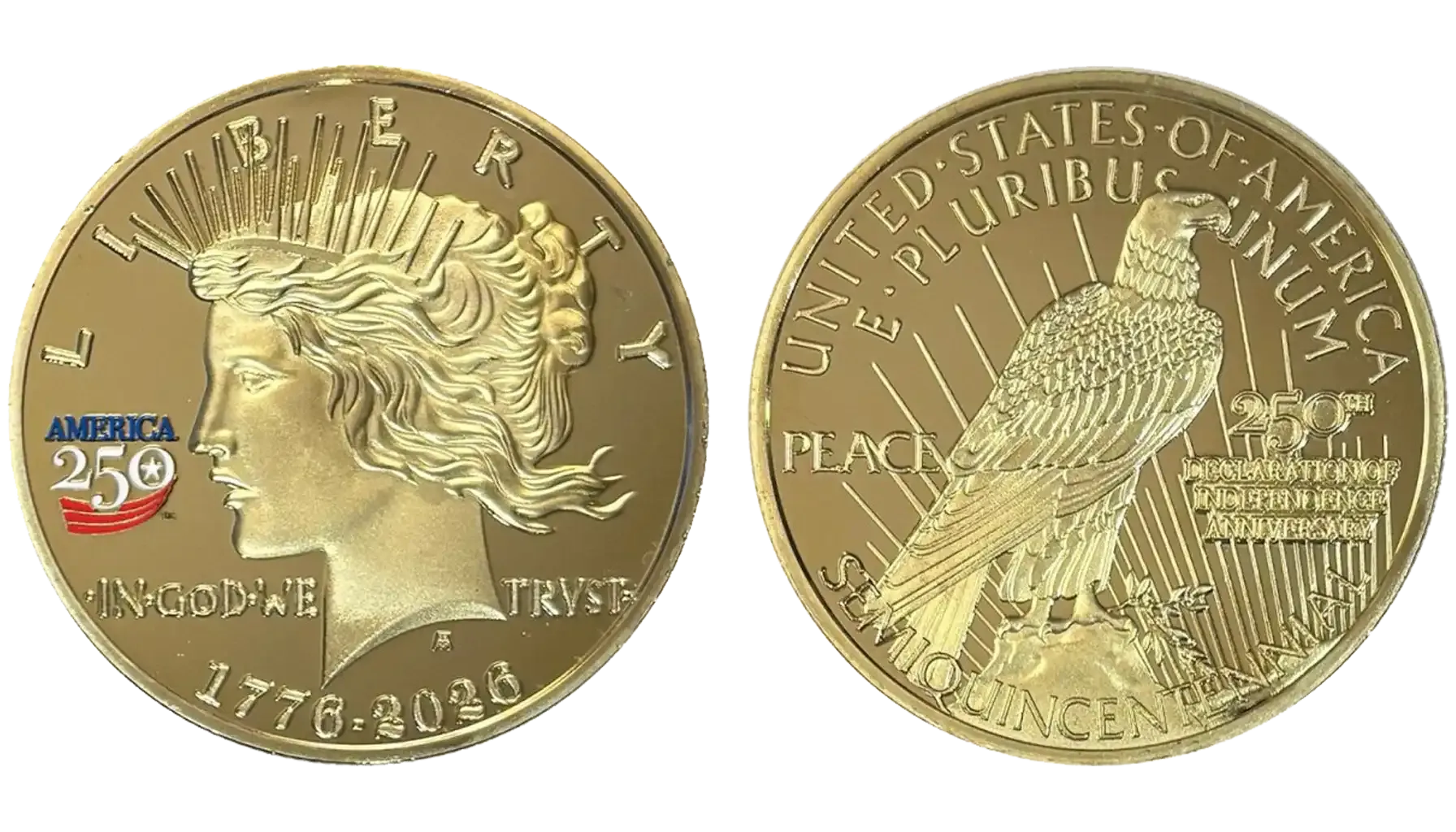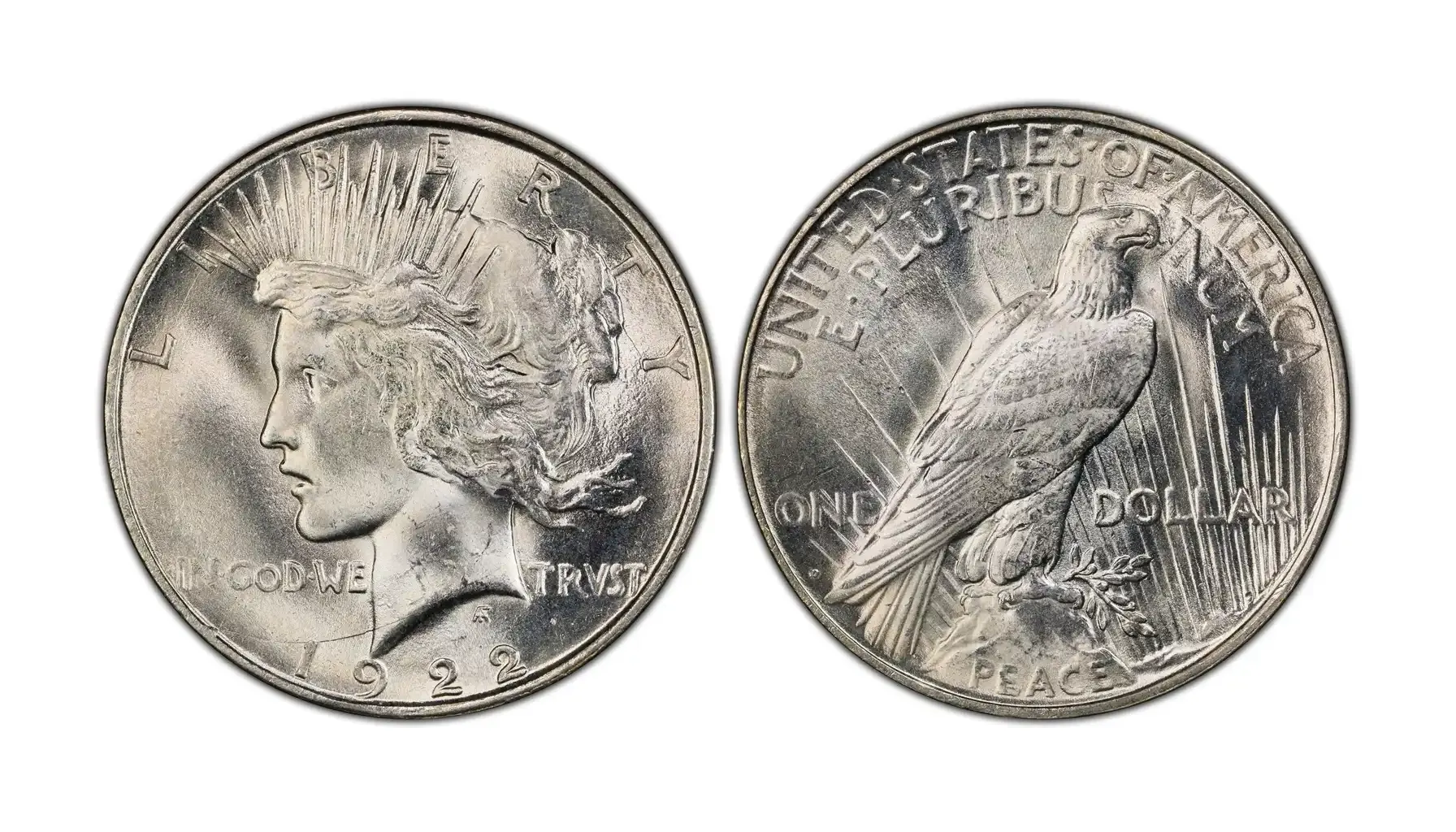Contents:
A dime might be 1/10 of a dollar, but it’s still a valuable coin. Actually, some dimes might be worth thousands and thousands of dollars. Would you like to know which ones?
This article presents the rare copper dime value and how to identify those rare pieces. Get ready, you’ll be hearing a lot about dimes!
It’s easy to get confused about many different coins. The AI coin Identifier could help you out.
Brief History of the US Dimes
In 1792 the Coinage act first established the denomination, 1/10 of a dollar. The new coins had to be small to fit into this denomination. A popular metal back then was silver.
From 1796 to 1964, U.S. dimes were primarily made of 90% silver and 10% copper. This silver era includes series like Draped Bust (1796–1807), Capped Bust (1809–1837), Seated Liberty (1837–1891), Barber Dime (1892–1916), Mercury Dime (1916–1945), Roosevelt Dime (1946–1964).
After the Coinage Act of 1965, the dimes were no longer made with silver. The post-1965 era has Clad Dimes (Copper-Nickel base). Roosevelt dime (1965-now) is clad-based.
Fun fact: Are dimes made of copper? Not entirely! Even though they’re called “Copper”, most contain only 75% of this metal, plus 25% Nickel. Even older silver-based pieces are called Copper due to the yellowish colour.
Value-Increasing Factors
Most modern coins barely step above their face value, and copper-based dimes are a daily modern arrival. Valuable dimes copper dime value could be very high, as long as the coin meets at least one of the criteria:
The piece is rare. The rarer a coin or error type is, the more valuable it will usually be. Low-mintage coins are more sought after.
The piece is in Mint State condition (grade). Coins are rated on the scale. Higher grades mean higher value. Mint State (MS) or Proof (PR) coins are worth more than circulated ones. A certificate of grade is a great boost to value.
The coin has an error. Depending on the type and severity of the error, the bit can cost a few hundred dollars or more. A collectible dime with copper rim error is very recognizable and can increase the value tenfold.
Most Valuable Copper Coins
How much is a copper dime worth? For these rarest pieces, the value easily climbs over $1000. Let’s see those rare examples and find out what makes them so desirable.
1975 No-S Proof Roosevelt Dime
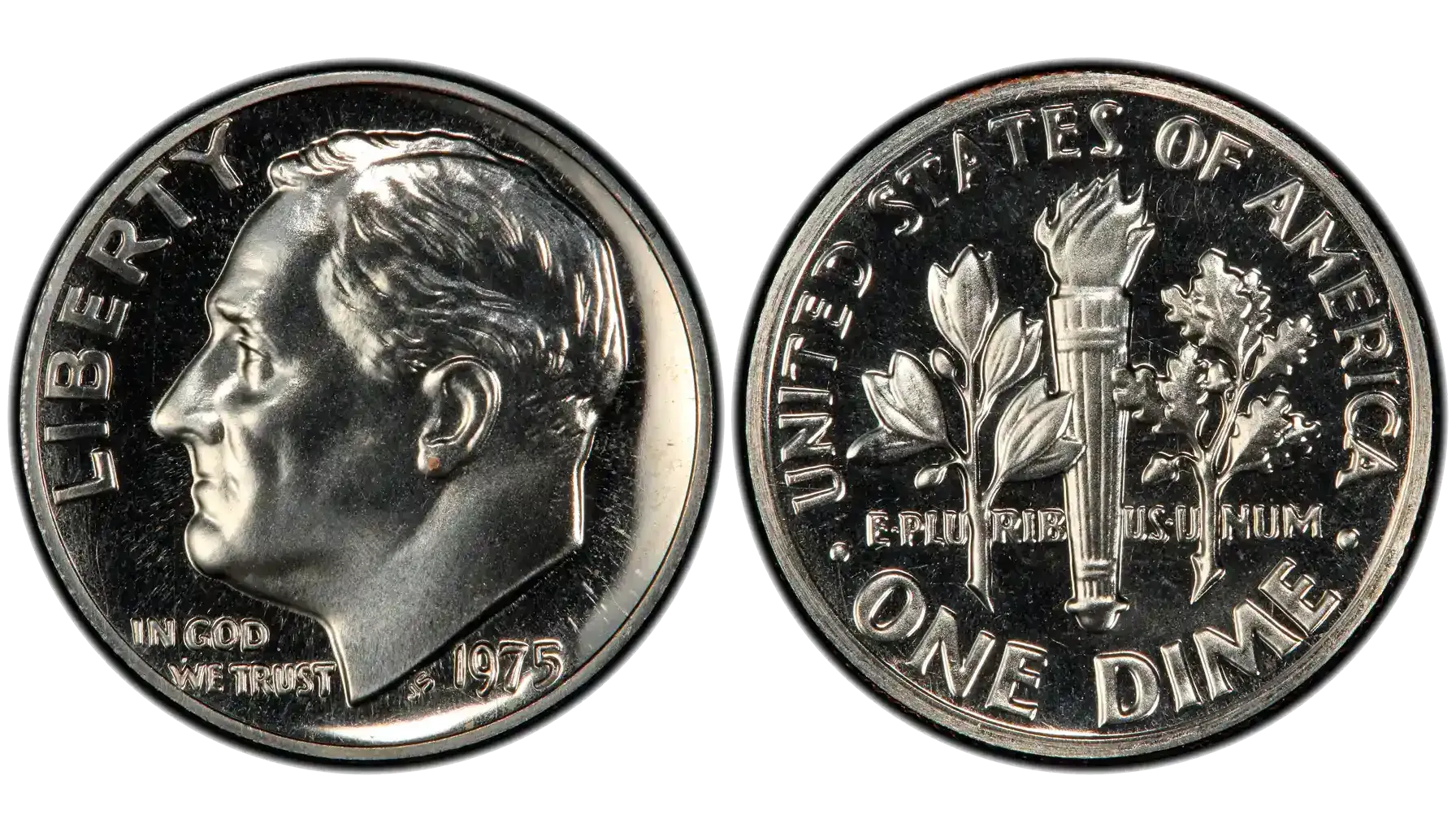
Usually proof coins are made at the San Francisco Mint and carry its signature “S” mark. But when the San Francisco Mint began making proofs, all dies for them were prepared at the Philadelphia Mint, the mint that commonly had no mint mark at all.
Normally, the workers would add an “S” to the coin, but due to a mistake they escaped without the mark.
Mintage: Only 2 “No-S” pieces are known among 1975 dimes.
Estimated Value: $500,000+.
1966 SMS Special Strike Type 2 Clad Roosevelt
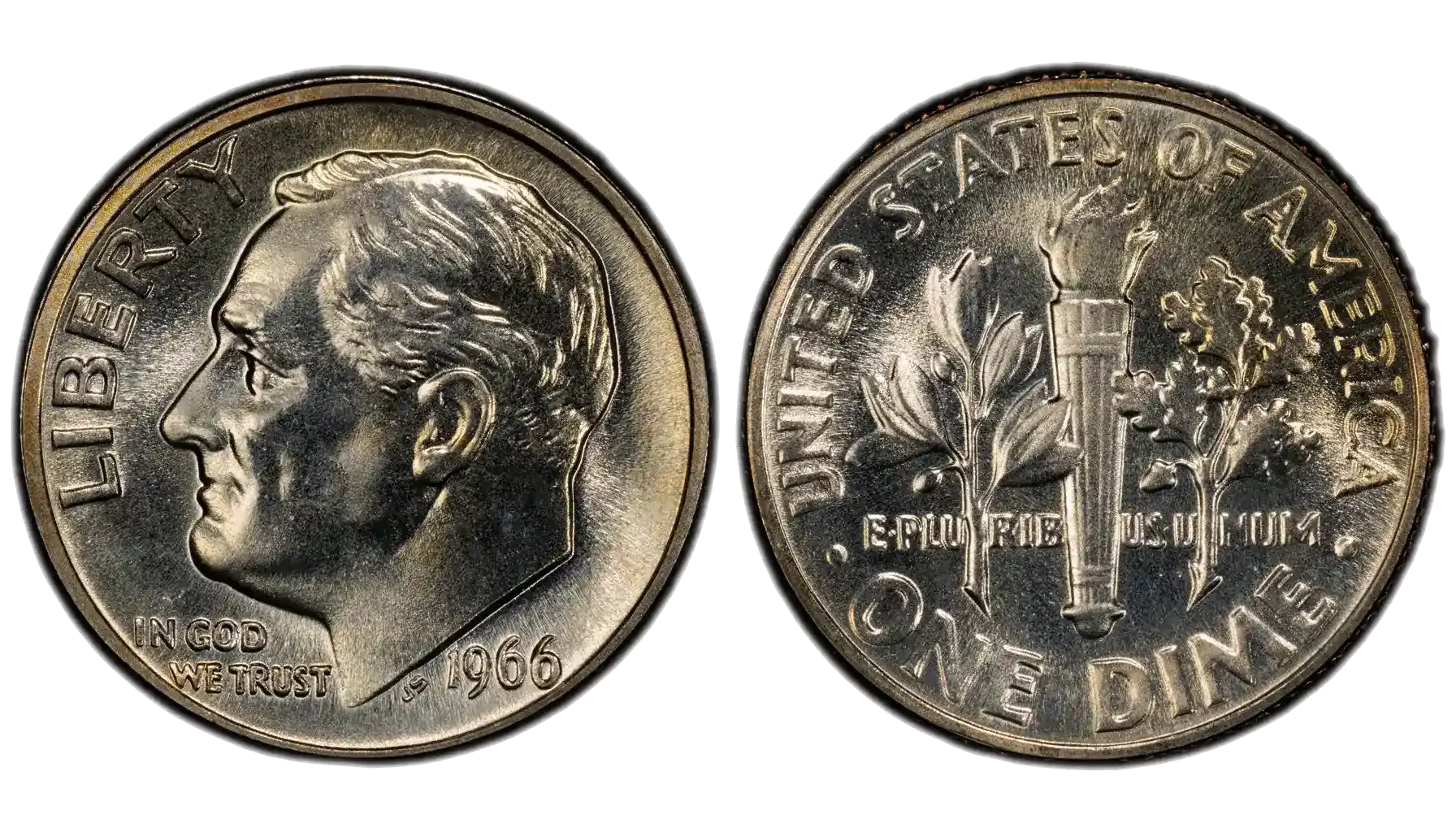
SMS stands for “Special Mint Set”. It’s similar to proof sets and was used during transitional times. By definition, special sets are scarce and offer coins of excellent quality, hence the high value.
Mintage: 2,260,000 (compared to the common 1,300,000,000 mintage for the 1966 dime).
Estimated Value: $1,000+.
1999-D Roosevelt Type 2 Clad Regular Strike
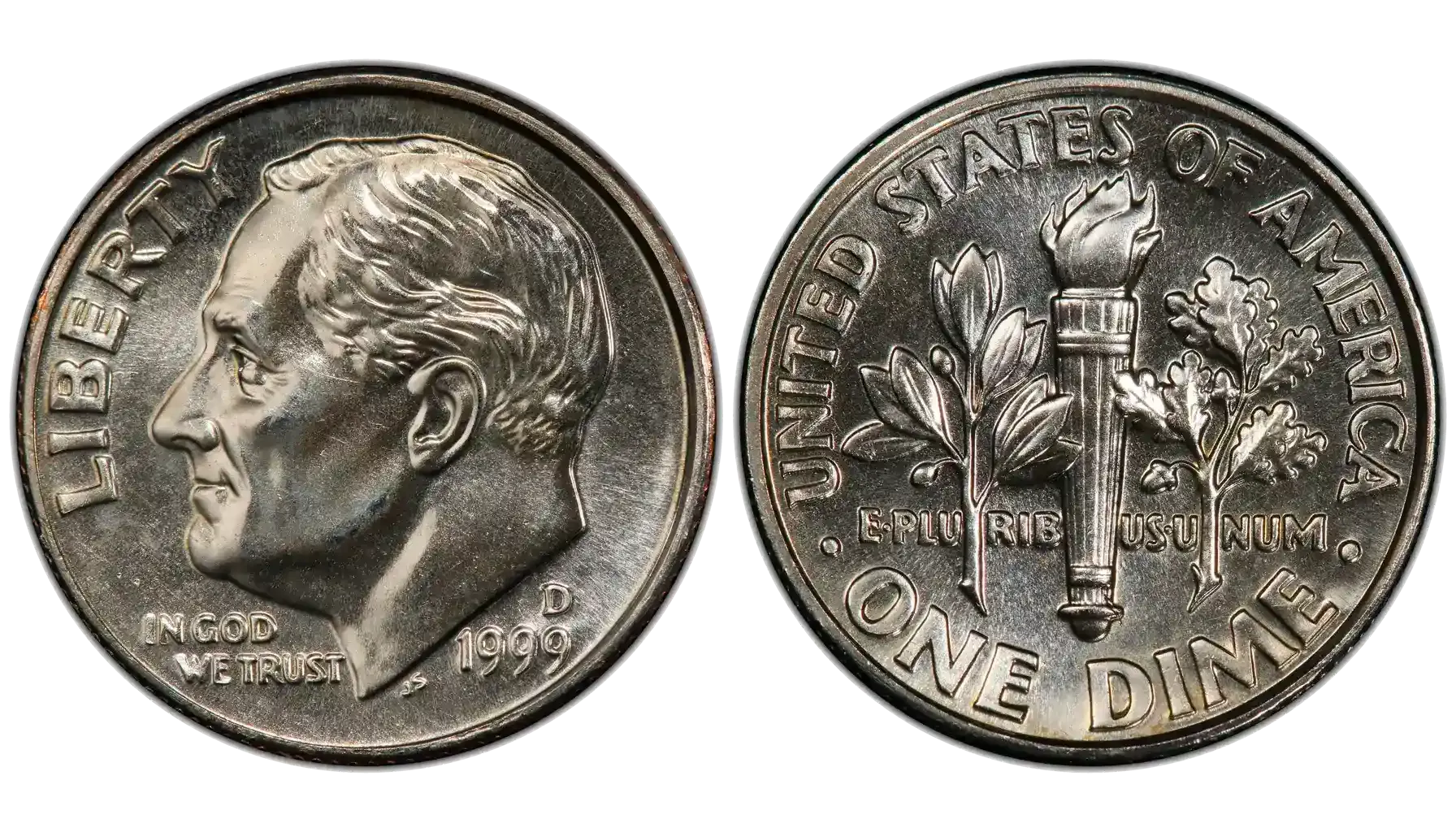
1999-D offers an interesting case of a coin that has a mediocre value in normal condition, but with an error, its price could be sky-high.
Mintage: 1,397,750,000.
Estimated Value: About $7 for MS65, but in 2009, an error piece was sold for $14,375.
1983 No S Proof Deep Cameo Type 2 Clad Roosevelt
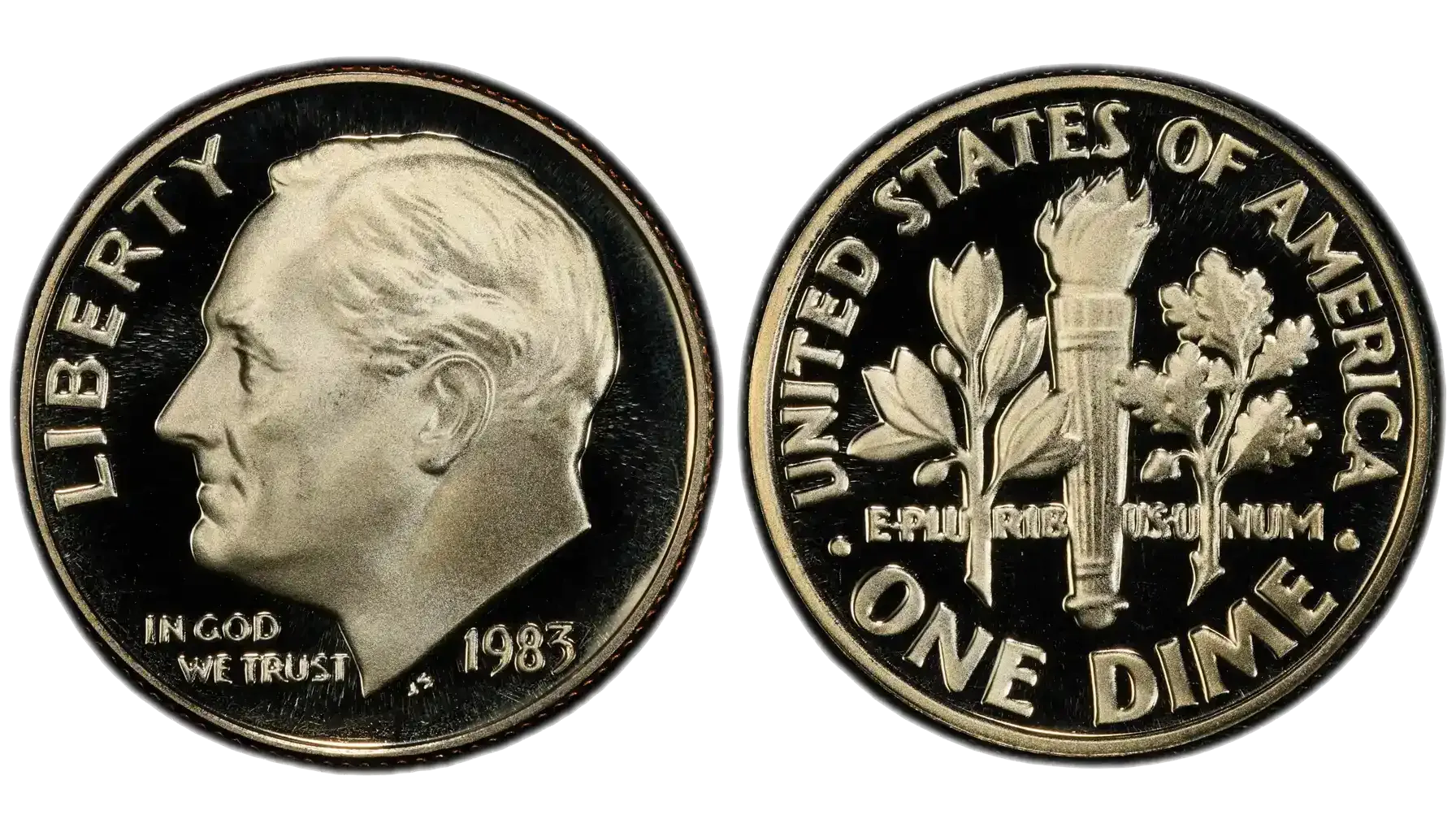
Cameo coins are a type of proof that has a distinctive contrast between the frosted design elements and the mirror-like background. By definition, cameo proofs are rare and excellently preserved.
Mintage: 3,279,126 pieces.
Estimated Value: $300+ in Mint State.
1998-P Bonded Group Roosevelt
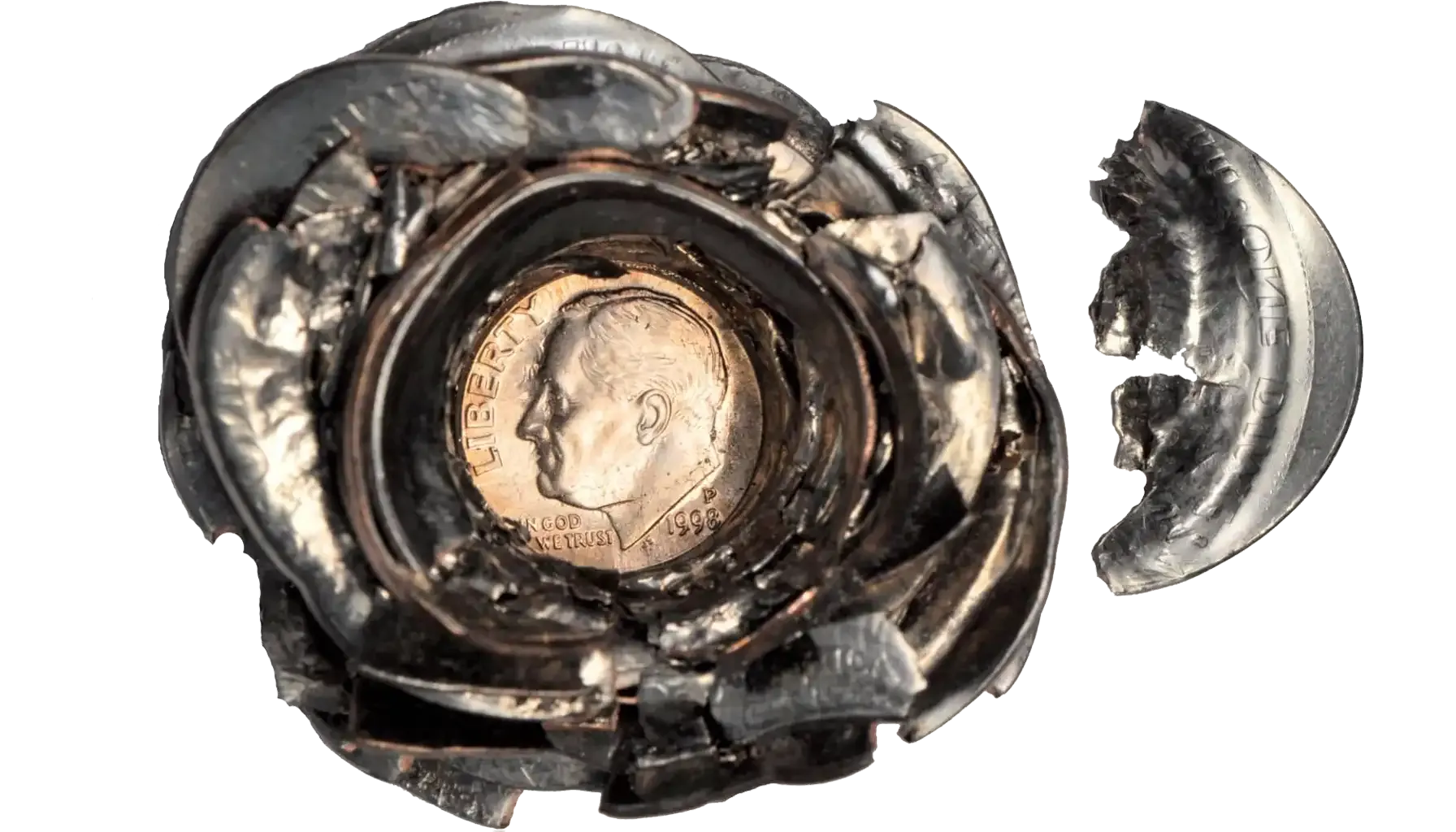
Imagine 32 distorted dimes bonded together. That is a 1998-P bonded error. Errors so massive and spectacular happen rarely and get the coin a deservingly high rarity.
Mintage: 1 known example (among 1,163,000,000 common pieces).
Estimated Value: sold for $9,200 at an auction.
1982-No P Mint Mark Roosevelt
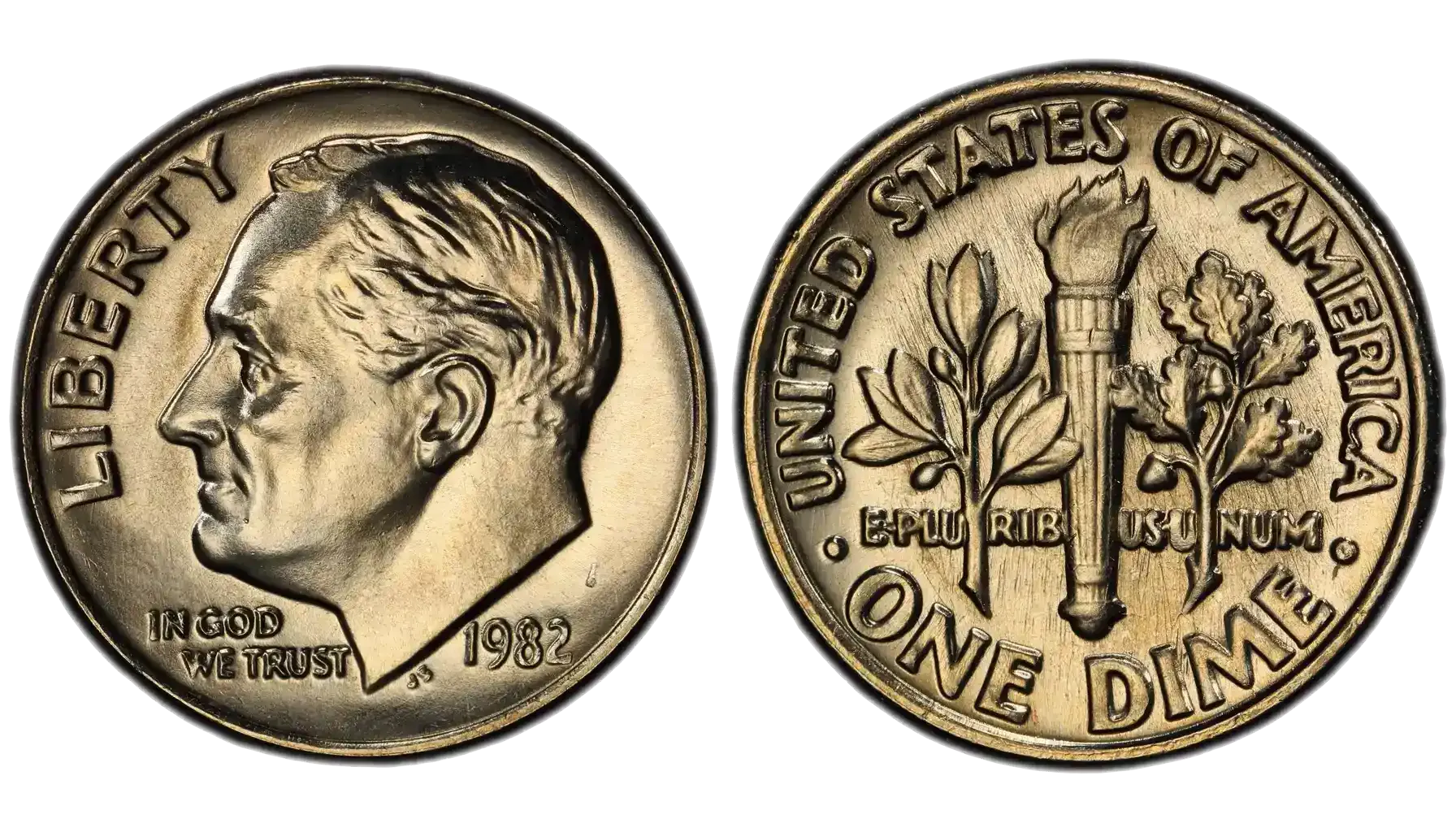
Originally, the Philadelphia mint left no mint mark on its production. After all, it was one of the first mint facilities in the US. People expected that most coins came from them, so there was no need for mint marks.
In 1982, “P” mint marks were already incorporated into coins for consistency, but a certain batch of 1982 coins was minted without the “P” marks.
Mintage: 519,475,000 common “P” bits. Collectors are still counting the rare error copper dime quantity in the batch.
Estimated Value: sold for $9,200 at an auction.
Copper Dime Error List
Have you noticed a trend among those rare coins? All of them are either perfect, from a limited mint set, or they have some kind of error. If you combine both errors and excellent quality, you get a spectacular price.
We’ll look at some common errors you can find in such coins and how to identify them.
Error Dime With Copper Edge Missing
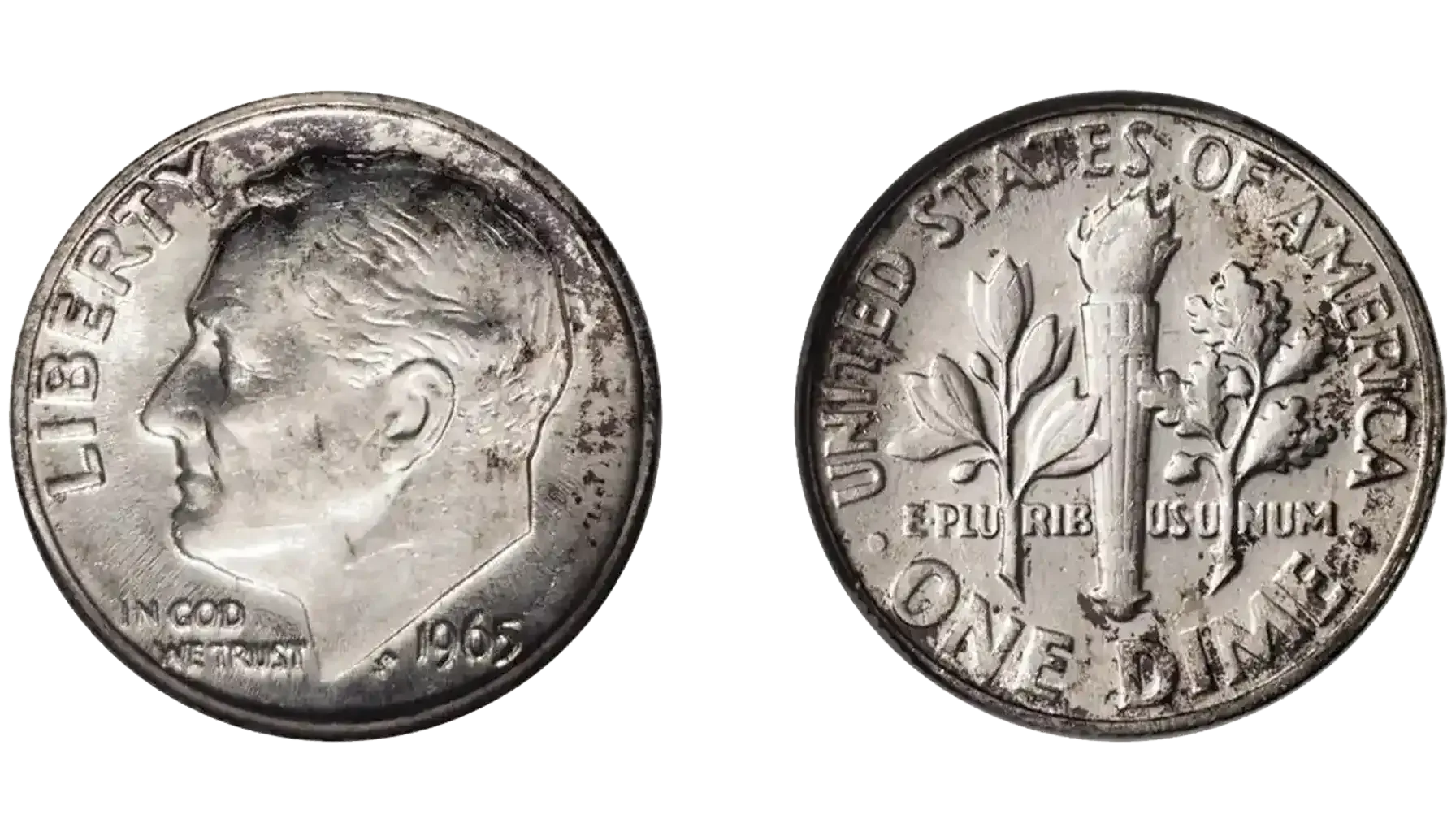
Modern dimes (post 1965) are made with a clad base, continuing copper. Yet some of the 1965 dimes were struck in a wrong way, making them look silver.
Look for: The coin’s edge looks entirely silver/nickel-colored, and not yellowish/orange.
Error Cause: The coin was struck on the wrong metal, like a blank meant for a 5¢ (nickel) or a foreign coin. The example from the photo was struck on a silver planchet.
Estimated Value: around $12,000
Missing Clad Error
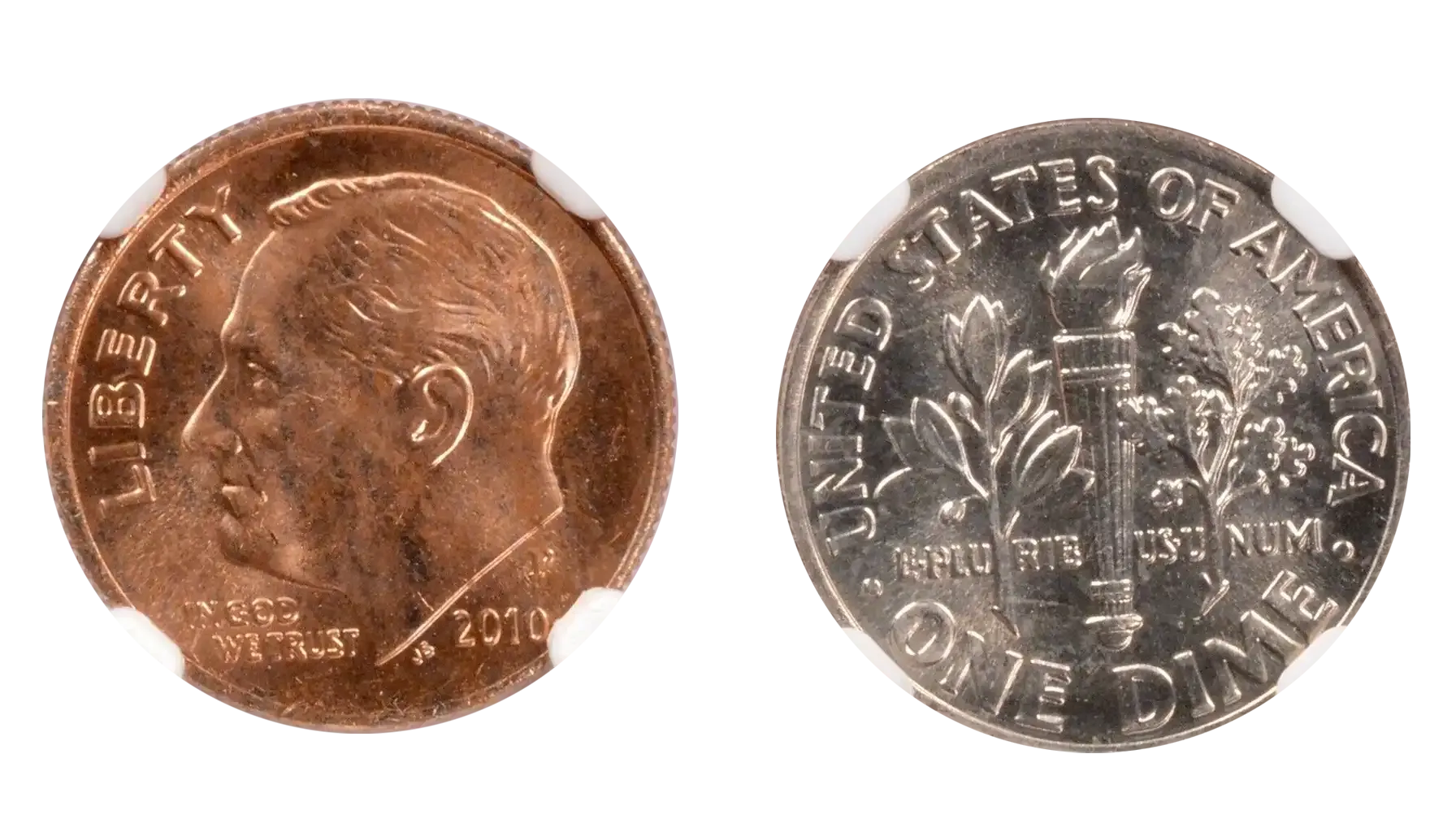
Clad is a metal composition of modern dimes. When a part of it is missing, a copper-based core shows up. Sometimes this error is referred to as “dime with copper rim”, because in some cases the clad is missing in the rim area, exposing the bright orange colour.
Look for: One side usually is brightly-orange coloured, while the other looks normal. In some cases there are orange patches all over the design.
Error Cause: One of the outer layers fails to bond to the copper-based core, causing the coin to appear partially or fully orange-colored on one side.
Estimated Value: Error dime with copper edge value is above $100.
Off-Centered Error
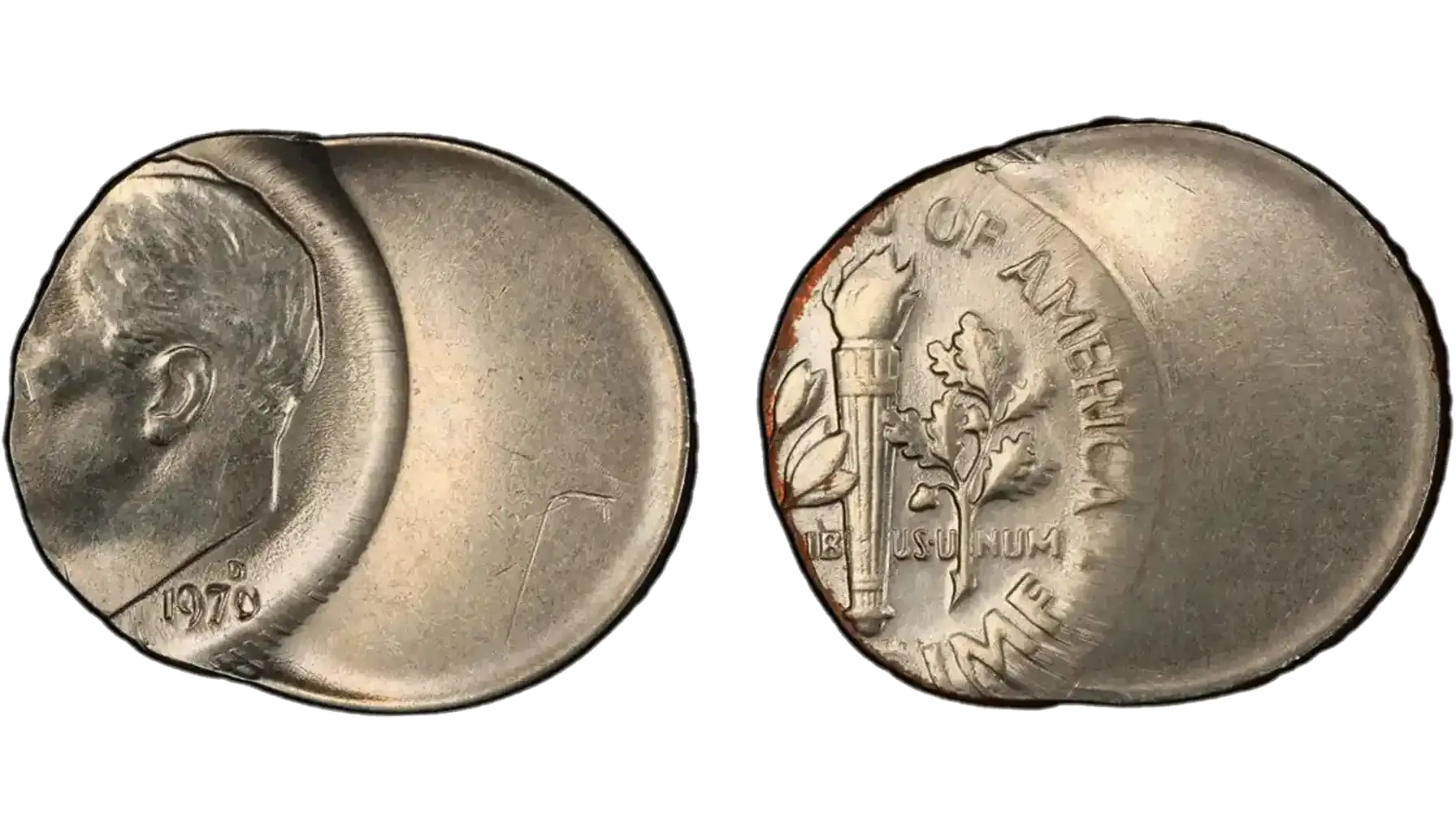
Off-center error coins are some of the most popular and visually recognizable errors. While they can’t raise the value very high, they still increase it noticeably.
Look for: A part of the design is missing, usually pushed to one side. A blank crescent-shaped area appears on the coin. The piece may be misshapen or slightly smaller/larger.
Error Cause: A coin is struck outside the center of the blank (called a planchet). This occurs when the planchet isn't properly aligned in the coin press.
Estimated Value: $10 – $30, depending on the type of coin + severity of the error.
Error Finding Guide
When was the last time you inspected your collectible? Some errors are really hard to notice. Imagine that your coin has an error worthy of the most valuable dime error lists!
1. Understand the Common Errors. Before searching, it’s important to know what kinds of mint errors exist. They might differ from denomination to denomination, but common errors are:
Off-center strikes: Part of the design is missing or shifted
Double dies: Letters or details appear doubled (not the same as machine doubling)
Missing clad layer: One or both sides are copper-colored due to clad metal separation. A very desirable error. Dime with copper rim value is high
Wrong planchet: Coin struck on a blank meant for a different denomination (e.g., a penny)
Clipped planchet: Coin has a curved or straight section missing
Broadstrike: Coin struck without the collar, making it wider and smooth-edged
Strike-through errors: Foreign material left an impression during striking
Die cracks or cuds: Raised lines or blobs of metal from damaged dies
2. Gather the Right Tools. Use collector tools and inspect your collectible thoroughly:
A 10x loupe or magnifying glass: Essential for spotting fine details and doubling
Digital scale: Helps detect wrong planchets or missing clad layers
Good lighting: Use a strong LED or desk lamp
3. Examine both sides of the coin and the edge. Check:
Date and mint mark
Lettering and numbers
The rim and edge
Design elements
Color and tone

4. Verify and Research. If you think you’ve found an error:
Compare to known examples online (search for error types by year and denomination)
Weigh the coin. Roosevelt pieces, a very common variety, weigh 2.5 grams. If your collectible is heavier/lighter, maybe it’s an error or a counterfeit
Photograph the piece clearly for documentation or help from online communities
Submit to a grading service (PCGS or NGC) if it's a major or valuable error
Coins ID Scanner
Coin ID Scanner is your guide to identify almost any coin.
The app uses image-based AI to identify coins and provide details on their country, denomination, year, composition, rarity, market value, and other info. The app recognizes over 150,000 coin types, domestic (US) and international.
What’s nice is that the Coin ID Scanner offers guidance to the beginners. How to grade collectibles and how to preserve them. There are dozens upon dozens of blogs offering historical context and numismatic news.
The app is available for both iPhone and Android.

